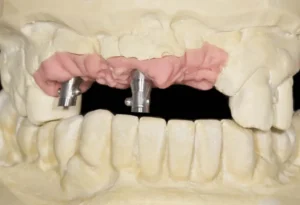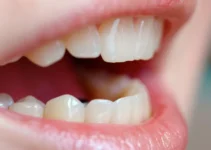When dental patients face the challenge of insufficient bone density for implants, several advanced solutions can help rebuild the necessary foundation. Bone regeneration techniques, including bone grafts and guided tissue regeneration, are commonly employed to enhance bone volume and quality. These procedures allow for the successful placement of dental implants, ensuring both functional and aesthetic restoration. It’s vital for patients to understand the available options and consult with a specialized implantologist to determine the best course of action tailored to their specific needs.
Causes of Bone Loss
Bone loss in the dental context is a significant concern for both patients and practitioners alike. Understanding the underlying causes is crucial for effective treatment and prevention. The primary reasons for bone loss around the teeth often include periodontal disease, tooth extraction, and trauma or injury. Each of these factors can detrimentally impact the structural integrity of the jawbone, leading to a host of dental problems.
Addressing bone loss promptly is essential to maintaining oral health and function. Timely intervention can prevent further complications, such as tooth loss, altered facial structure, and difficulties with dental prosthetics. Let’s delve into the details of these common causes to better understand their impact and management.
Periodontal Disease
Periodontal disease, commonly known as gum disease, is a leading cause of bone loss. This chronic infection affects the gums and, if left untreated, can extend to the bone that supports the teeth. The progression of periodontal disease typically follows a path from gingivitis to more severe stages such as periodontitis and ultimately, advanced periodontitis. The bacteria involved in gum disease produce toxins that initiate an inflammatory response, which in turn damages the bone tissue.
Several risk factors increase the likelihood of developing periodontal disease, including poor oral hygiene, smoking, diabetes, and genetic predisposition. To mitigate these risks, it is essential to maintain a rigorous oral hygiene regimen, attend regular dental check-ups, and manage chronic conditions effectively. The adverse effects of periodontal disease can be minimized through early intervention and appropriate periodontal therapies.
Studies have shown that untreated periodontal disease can lead to significant bone loss over time, making it imperative for individuals to seek dental care at the first signs of gum problems. Bleeding gums, persistent bad breath, and loose teeth are among the symptoms that should prompt an immediate dental consultation.
Tooth Extraction
Tooth extraction is another common cause of bone loss. When a tooth is removed, the jawbone that once supported it no longer receives the necessary stimulation to maintain its density. This phenomenon is known as alveolar bone resorption. The bone begins to resorb or shrink, which can lead to a reduction in the overall bone volume in the affected area.
The degree of bone loss following an extraction can vary based on several factors, such as the location of the extracted tooth, the patient’s age, and overall health. To counteract the adverse effects of tooth extraction, bone grafting procedures are often recommended. These procedures help to preserve the bone structure and provide a stable foundation for future dental implants.
A proactive approach to tooth extraction involves planning for bone preservation. Dental professionals may use techniques such as socket preservation to minimize bone loss immediately following the extraction. This involves placing a bone graft material into the extraction socket to encourage new bone growth and maintain the socket’s shape.
Trauma or Injury
Trauma or injury to the jaw and teeth can also result in bone loss. Accidents, sports injuries, or any form of impact can damage the bone structure, leading to a gradual deterioration if not addressed promptly. The extent of bone loss depends on the severity of the trauma and the timeliness of the treatment received.
When a traumatic injury occurs, immediate dental and medical attention is crucial to manage the damage and prevent bone loss. In some cases, surgical intervention may be necessary to repair fractures and stabilize the affected area. Post-injury rehabilitation often involves a combination of medications, physiotherapy, and surgical procedures to restore normal function and appearance.
Prevention of trauma-related bone loss includes protective measures such as wearing mouthguards during sports activities, using seatbelts in vehicles, and following safety protocols at work and home. Ensuring that any dental injuries are treated promptly can significantly reduce the risk of long-term bone loss and other complications.
For more in-depth discussions on related topics, feel free to explore other articles that delve into advanced dental treatments, post-extraction care, and innovative techniques in bone regeneration.
Diagnostic Methods
Accurate diagnosis is crucial for successful dental implantology and bone regeneration. Utilizing comprehensive diagnostic methods ensures that the dental practitioner can create a tailored treatment plan that maximizes the success rate of implants. In recent years, advancements in technology have greatly enhanced our ability to diagnose and plan for dental procedures with a high degree of precision. Two primary diagnostic tools are X-rays and CT scans.
Each method offers unique advantages and provides critical information that informs the surgical and postoperative phases of dental implantology.
X-rays
X-rays are one of the most commonly used diagnostic tools in dentistry. They provide a clear image of the bone structure, helping to determine the condition and quantity of the bone in the implant site. This is particularly important for assessing bone density and detecting any potential underlying issues that could affect the success of the implantation procedure.
There are different types of X-rays used in dental implantology:
- Periapical X-rays: Provide detailed images of a small section of the jaw, including the tooth root and surrounding bone.
- Panoramic X-rays: Offer a broad view of the entire mouth, including the jaw, sinuses, and nasal area. This is essential for planning multiple implant placements and for identifying areas with inadequate bone.
By utilizing X-rays, dental professionals can accurately assess factors such as bone height and quality, allowing for more precise implant placement and reducing the risk of complications.
CT Scans
While X-rays are invaluable, CT scans (computed tomography scans) offer a more comprehensive, three-dimensional view of the jaw and surrounding structures. This advanced imaging technique provides detailed information that is critical for complex implant cases and bone regeneration procedures.
CT scans offer several benefits over traditional X-rays:
- 3D Imaging: Provides a complete, three-dimensional view of the bone and surrounding tissues, which is essential for precise implant placement.
- Accurate Measurements: Allows for highly accurate measurements of bone dimensions, including width, height, and density.
- Identifying Pathologies: Helps in identifying any potential pathologies or anomalies that could impact the success of the implant procedure.
By integrating CT scans into the diagnostic process, dental practitioners can create a highly detailed surgical plan that minimizes risks and maximizes the likelihood of a successful outcome. This approach is particularly beneficial for patients requiring extensive bone regeneration or those with complex anatomical considerations.
Ultimately, the use of advanced diagnostic methods such as X-rays and CT scans forms the backbone of effective implantology and bone regeneration. By staying informed about these techniques, dental professionals can enhance their practice and improve patient outcomes. To delve deeper into the world of dental implants and bone regeneration, be sure to explore our other articles.
Bone Regeneration Solutions
The field of bone regeneration has seen significant advancements over the past few years. These developments are particularly critical in dental implantology, where adequate bone structure is essential for successful implant placement. Bone regeneration solutions have become more sophisticated, leveraging advanced technologies and biological materials to provide optimal results.
Understanding various bone regeneration techniques can help patients and practitioners alike make informed decisions. Bone grafting, guided bone regeneration (GBR), and stem cell therapy are among the most promising approaches in contemporary dental practice.
Bone Grafting
Bone grafting is one of the most common procedures used to promote bone growth and provide a stable foundation for dental implants. This technique involves the transplantation of bone tissue to the site where bone is deficient. Sources of graft material can include autografts (from the patient’s own body), allografts (donor tissue), xenografts (animal tissue), and alloplasts (synthetic materials).
The advantages of bone grafting include its effectiveness in increasing bone volume and facilitating the subsequent placement of dental implants. Studies have shown that bone grafting can significantly improve the success rate of implants in areas with insufficient bone.
However, bone grafting comes with its own set of challenges, such as the potential for donor site morbidity in autografts and the risk of immune rejection in allografts and xenografts. Careful planning and consideration are essential to minimize these risks and ensure successful outcomes.
Guided Bone Regeneration (GBR)
Guided Bone Regeneration (GBR) is a technique that employs barrier membranes to direct the growth of new bone tissue at the desired location. The principle behind GBR is to create a secluded space that allows bone-forming cells to proliferate while excluding undesirable cell types, such as epithelial cells, which could interfere with bone growth.
GBR is often used in conjunction with bone grafts to enhance the regenerative process. The membranes used in GBR can be resorbable or non-resorbable, depending on the clinical scenario. The choice of membrane material is crucial for the success of the procedure, as it must maintain its integrity long enough to facilitate sufficient bone growth.
Research indicates that GBR can be highly effective in augmenting bone volume and enhancing implant stability. However, surgical skill and precision are vital for the success of GBR, as improper placement of the membrane can lead to complications such as infection or membrane exposure.
Stem Cell Therapy
Stem cell therapy represents a cutting-edge approach to bone regeneration, leveraging the unique properties of stem cells to promote tissue regeneration. Stem cells have the ability to differentiate into various cell types, including osteoblasts, the cells responsible for bone formation. Various sources of stem cells are used in regenerative dentistry, including mesenchymal stem cells (MSCs) from bone marrow, adipose tissue, and dental pulp. These cells can be harvested and then applied to the site needing regeneration, where they stimulate the growth of new bone tissue.
The potential benefits of stem cell therapy are substantial. Studies have shown that stem cell-based approaches can enhance bone regeneration and improve the integration of dental implants. Nonetheless, this field is still evolving, and there are challenges to be addressed, such as ensuring the consistent quality and potency of stem cell preparations.
As research continues to advance, stem cell therapy holds promise for becoming a mainstream option in bone regeneration for dental implantology, offering patients a biologically advanced solution to their dental needs. If you found this article insightful, we encourage you to explore our other articles on advanced dental procedures and cutting-edge treatment options in the field of implantology and bone regeneration.
Common Questions About Insufficient Bone for Dental Implants
Many patients considering dental implants are concerned about having insufficient bone to support these structures. Below is a common question addressing the challenges and solutions related to this issue.
What are the options if I don’t have enough bone for dental implants?
If you lack sufficient bone volume for dental implants, several advanced techniques can help regenerate bone and provide a solid foundation for the implants. Bone grafting is the most common approach, where bone from another part of your body or synthetic materials are used to augment the bone at the implant site. Other techniques include sinus lifts for upper jaw implants and use of special growth factors to stimulate bone formation. Consulting with a specialist in implantology and bone regeneration is crucial to determine the best option for your specific case.

My name is Salman Kapa, a 73-year-old expert in bone regeneration and dental implantology. With decades of experience in the field, I am dedicated to advancing our understanding of oral health and hygiene. Through my research and writing, I aim to contribute to the development of innovative solutions in dental care.




